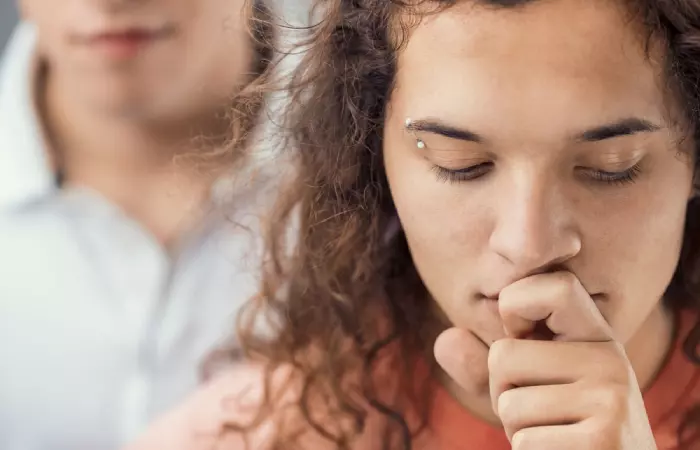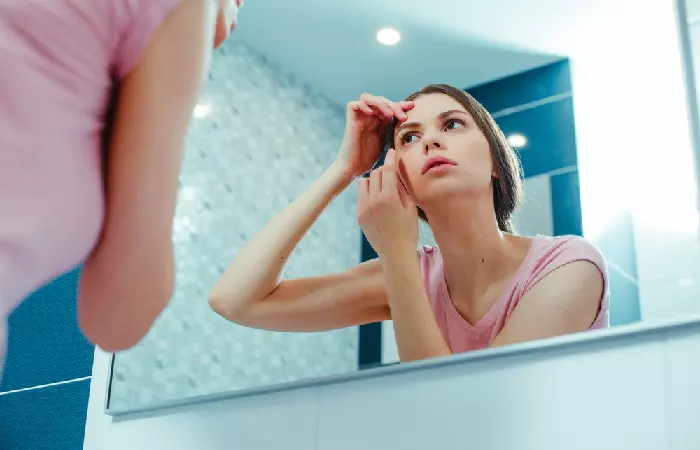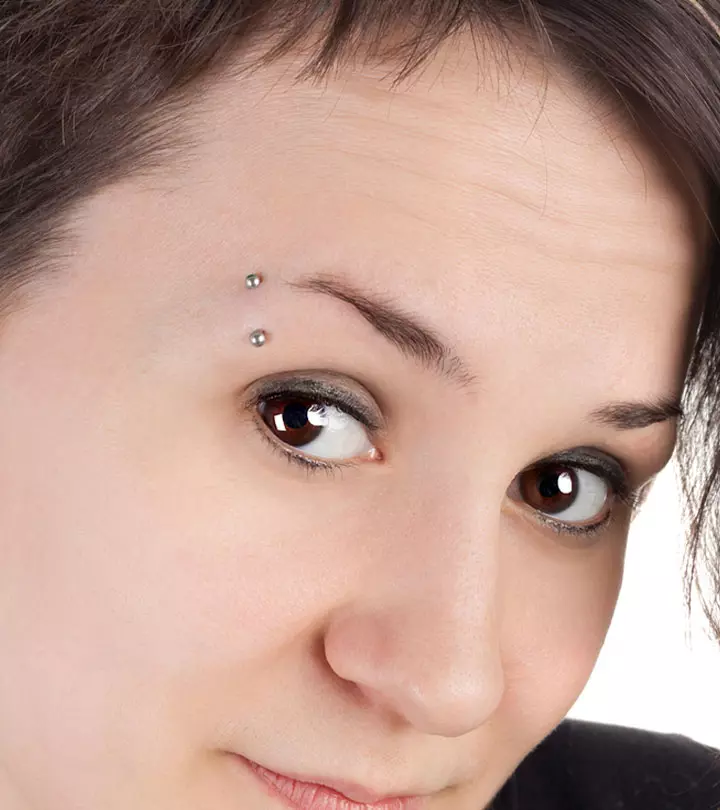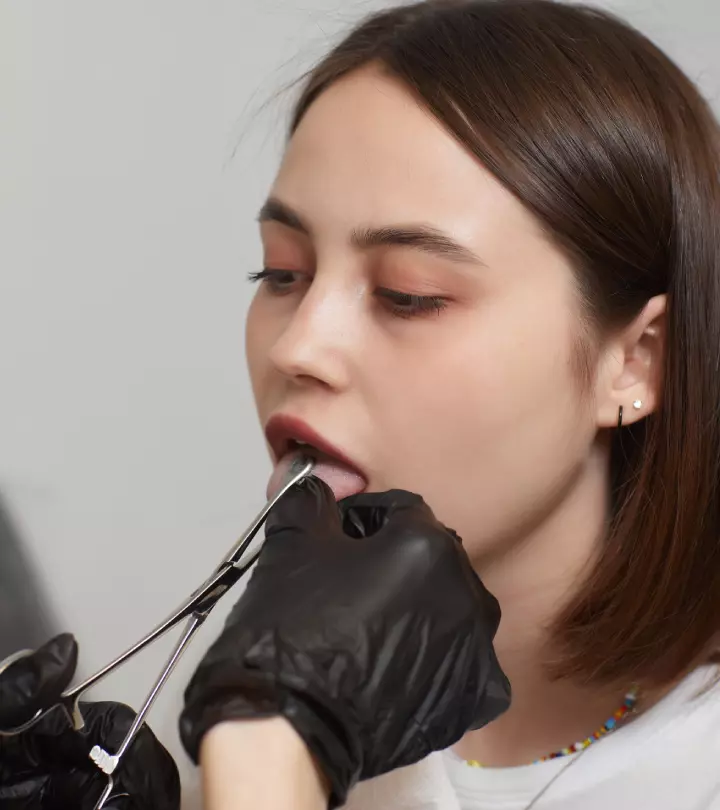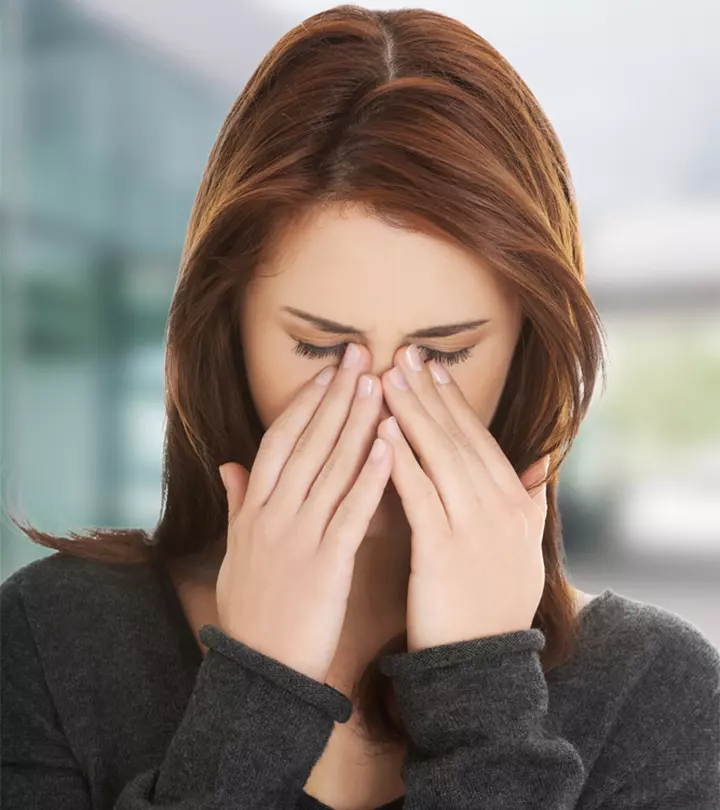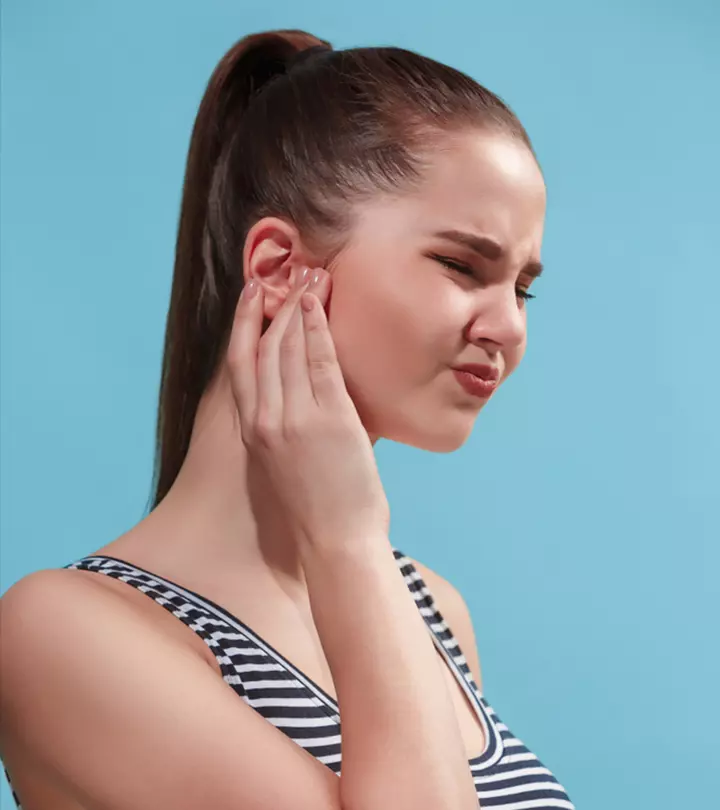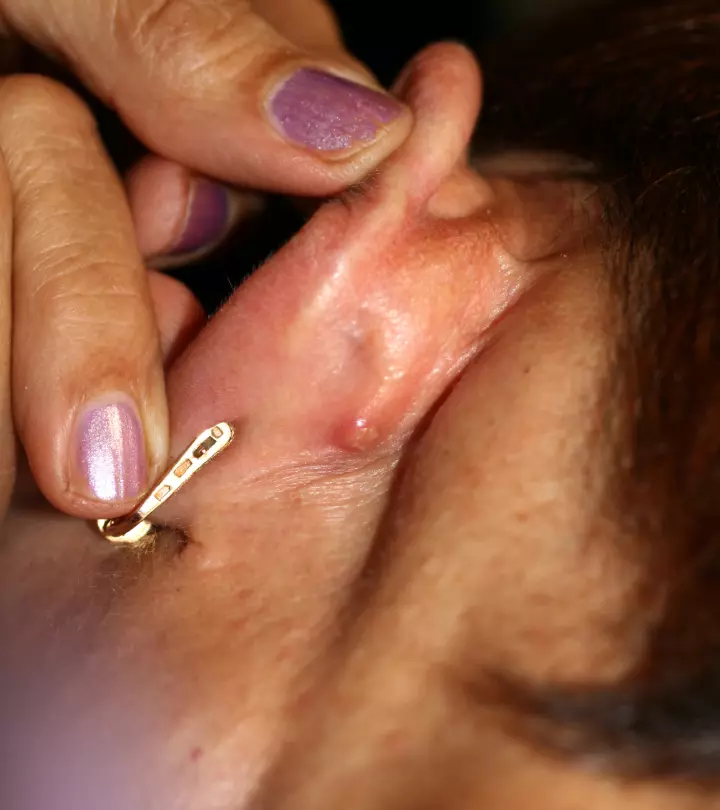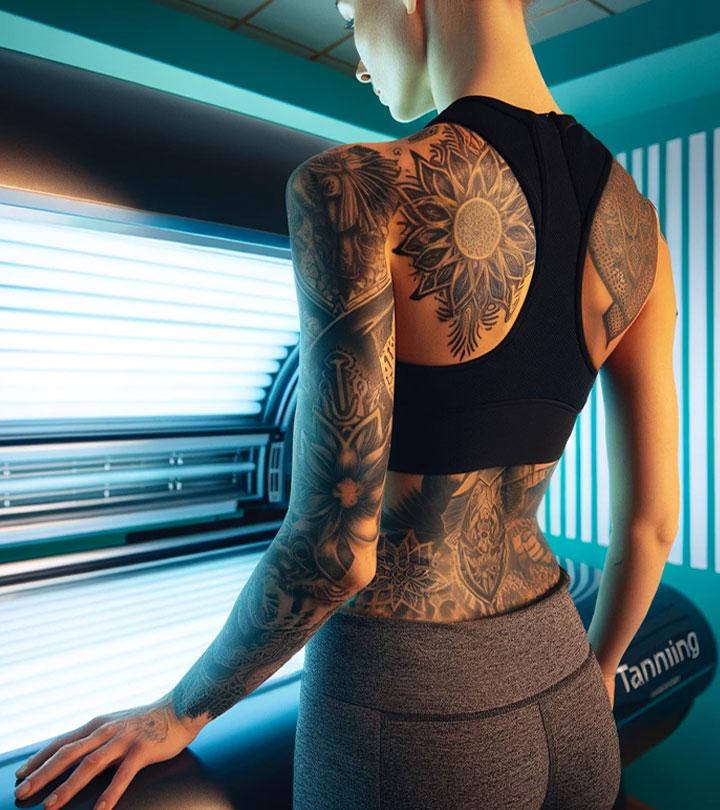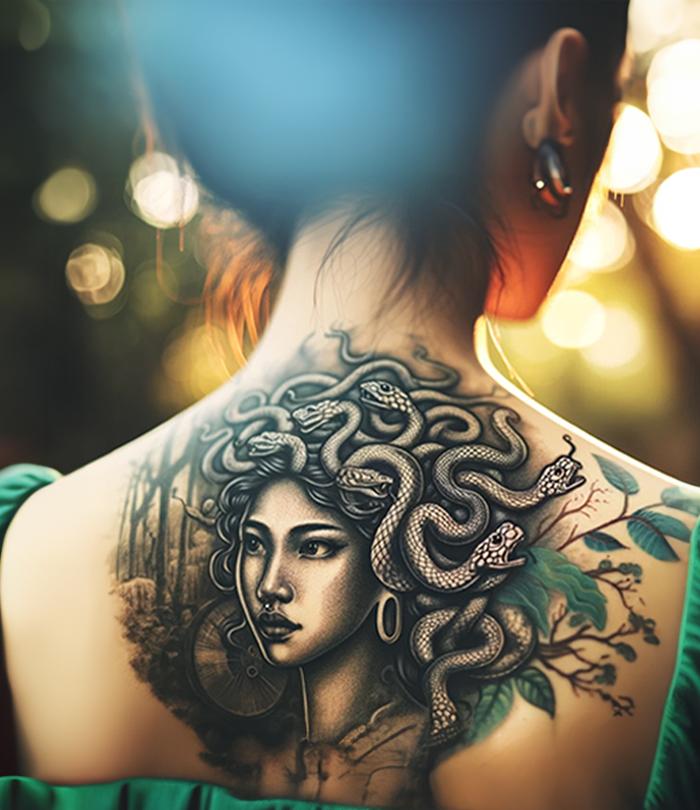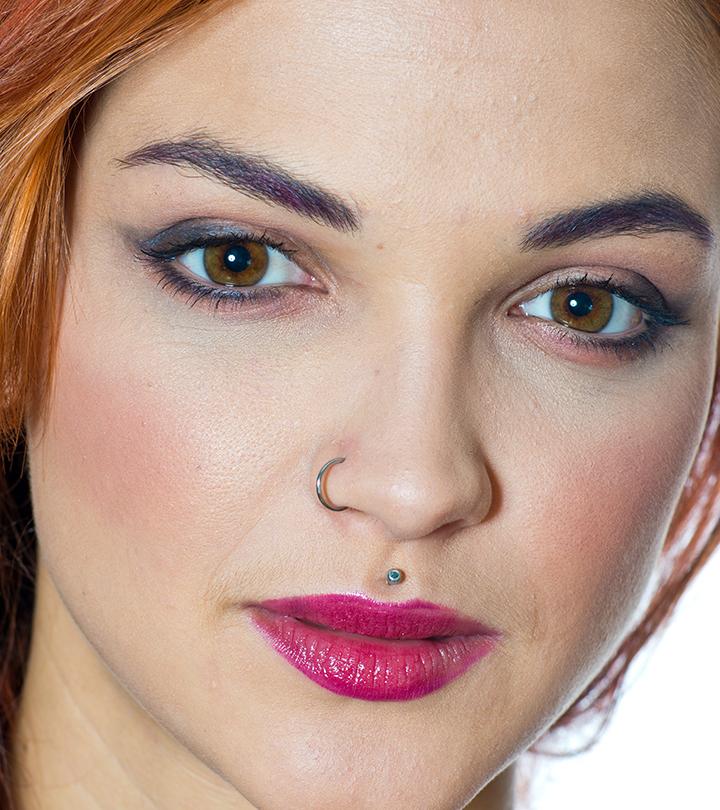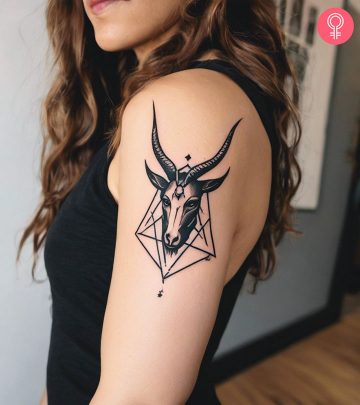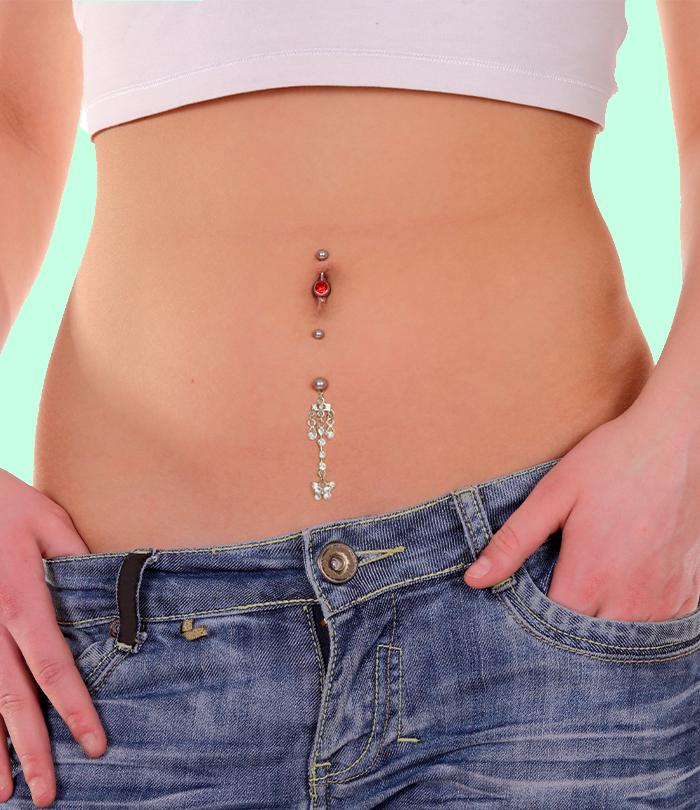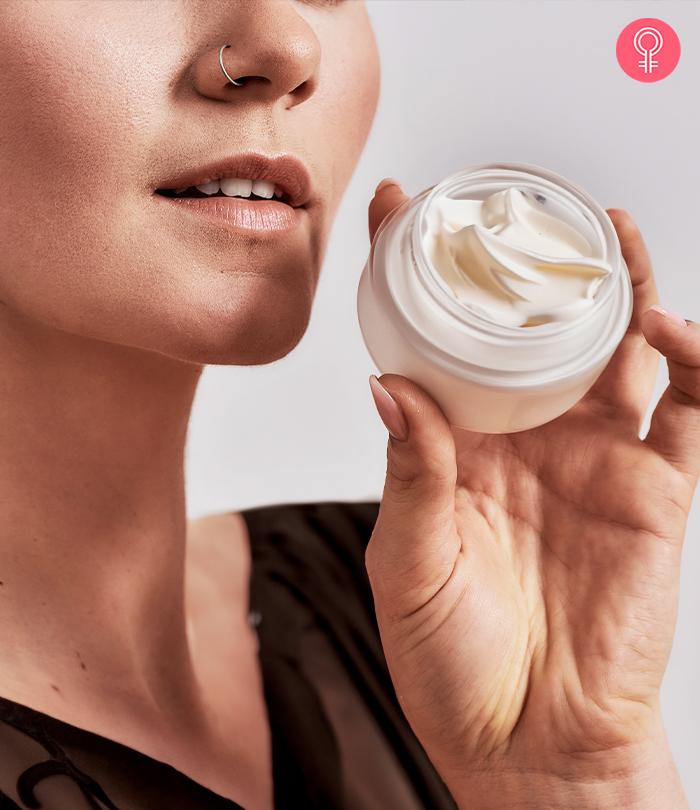Infected Eyebrow Piercing: Signs, Treatment, & Prevention
Deal with infected eyebrow piercings with ease and expertise.
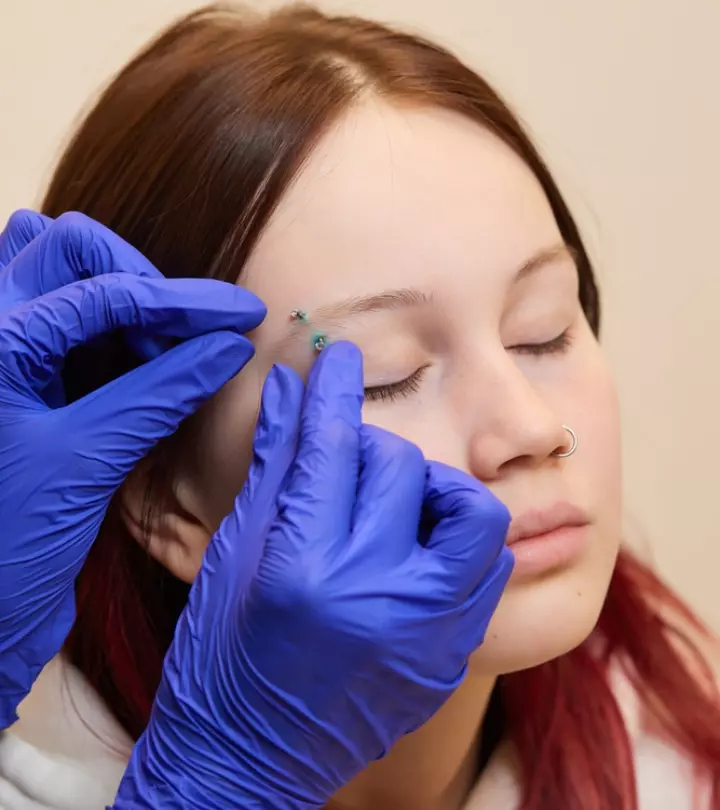
Image: Shutterstock
If you are looking for a piercing that draws attention to your eyes and can enhance your facial features, the well-trusted eyebrow piercing can do the trick. However, as popular as it is, an infected eyebrow piercing can be an equally common menace. This piercing is usually done on the upper edge of the brow, where there is a thicker area of tissues, to minimize pain and complications. However, an infection can occur when bacteria or fungi enter/contaminate the puncture wound and cause redness, swelling, pain, and discharge. This may occur if the piercings are not properly cleaned and cared for.
Understanding the signs of infection and taking proper care are crucial to ensure smooth healing. In this article, we will discuss the signs of a possible infection, ways to tackle it, as well as tips to keep an infection from occurring in the first place. Continue reading.
In This Article
What Does An Infected Eyebrow Piercing Look Like?
Anecdotal evidence suggests 10–20% of eyebrow piercings experience some form of infection. If you know what to look for, spotting an infected eyebrow piercing is not difficult (1). Some visual cues of an infection are as follows:
View this post on Instagram
- Redness: A bright pink or red ring or swelling of the piercing hole, possibly extending beyond the immediate area.
View this post on Instagram
- Pus: Yellow, green, or clear discharge, thick or thin, collecting around the piercing.
View this post on Instagram
- Crusting: Dried, yellowish-brown scabs or crusts forming around your piercing jewelry or your eyebrow.
View this post on Instagram
- Warm Tenderness: Feeling warmth and tenderness in the area, hinting at internal inflammation.
View this post on Instagram
- Swollen Lymph Nodes: The lymph nodes near the eyebrow, jaw, or ear appearing puffy, swollen and raised.
While the visual signs clearly indicate an infection, there are also other symptomatic clues to watch out for. Let us shift our focus to the less obvious signs that paint a clearer picture of an infection.
Signs Of An Eyebrow Piercing Infection
While the visual cues are apparent signs of an infection, other associated symptoms may also indicate a problem. Keep an eye out for these additional warning signs (2):
- Fever: An elevated temperature or feverish feeling hints that your body is fighting an infection.
- Chills: Feeling unexpectedly cold or chilly can also signal an internal battle against pathogenic invaders.
- Fatigue: Excessive tiredness or a lack of energy suggests your body’s resources are focused on combating an infection.
- Insomnia: Discomfort may lead to worry and sleepless nights as your body tries to heal.
- Red Streaks: Red streaks radiating from the piercing are a serious sign of infection spreading through the lymph system.
 Trivia
TriviaRecognizing the symptoms of an infection is crucial, but pinpointing the triggers is equally important. Explore various potential factors and their involvement in causing infections.
What Are The Causes Of An Eyebrow Piercing Infection?
Eyebrow piercings, while stylish, are open wounds and susceptible to infection. Moreover, regardless of proper aftercare, sometimes infections can occur even if your piercer follows best practices. There is no single cause, but the following list contains some of the major factors:
- Touching, playing with, or irritating the new piercing before it has fully healed. Even minimal contact from unclean hands can introduce bacteria to the piercing site.
- Inadequate aftercare or inconsistent cleaning twice daily with saline solution can aid bacteria to thrive (3).
- Exposure to contaminants like makeup, sunscreen, sweat, or unclean water can enter the open wound and cause complications.
- Unsanitary piercing procedures or unsterilized equipment can lead to bacterial contamination (4).
- Improper jewelry material, length, or gauge size can cause trauma, irritation, or allergic reactions (5).
- Forced or accidental movement of the jewelry can cause trauma and introduce bacteria. Sleeping on the piercing can also restrict blood flow (3).
- A pre-existing infection or unnoticed injury close to the piercing area can spread to a fresh piercing hole.
- Rejection of the piercing over time by the body’s immune response considering the jewelry a foreign object to push out (1).
Ann Marie, a makeup vlogger, who has tons of piercings, discusses her eyebrow piercing healing journey. She states, “The first five days were flawless, my piercing was doing really really well, there was no bleeding, no swelling, nothing like that. And then on day 6 it started to swell, it started to hurt really really bad. It looked irritated or infected and it turned really red, especially around the bottom ball of my eyebrow piercing…. The piercing got really really bad for the next two weeks…. My first thought was is it rejecting cuz you know that is pretty common for surface piercings….” She reached out for help to understand what she could do to aid her piercing to heal and was advised to touch it as little as possible, except for cleaning it twice a day. She followed the advice, regarding which she says, “And that was 100% right…. It was day 14, I think, is I believe when everything went back to normal, and my eyebrow piercing looked like it was healing fantastically (i).”
With proper piercing technique, jewelry, and daily care, infections can usually be avoided. If you suspect an infection, consult a doctor or professional piercer promptly. While prevention is always the best medicine, knowing how to effectively clean and care for an existing infection is crucial for a speedy and healthy recovery. Check below for some steps to guide your cleansing and healing routine.
How To Clean An Infected Eyebrow Piercing
While it is definitely not ideal, with the right tools and knowledge, you can take care of your infected body piercing. Look below for steps to start cleaning it (3):
- Wash hands with antibacterial soap before touching the piercing
- Create a saline solution by mixing a quarter tablespoon of sea salt in an 8 oz. glass of warm water.
- Soak a clean cotton ball or gauze in the saline solution and hold over the area for 5-10 minutes as a warm compress.
- Use a cotton swab soaked in the saline solution to clean the area and gently remove any crusting and discharge.
- Rinse well with warm water and gently dry with a clean paper towel
- Repeat 2-3 times daily
Healing takes time, so stick to your cleaning routine diligently and avoid changing the jewelry until your piercing is fully healed. The section below discusses what to do if your eyebrow piercing, despite your best efforts, shows signs of an infection. Read on.
How To Treat An Infected Eyebrow Piercing
If you face an infected eyebrow piercing, prompt and extra care is essential. Adhere to these clear-cut steps to aid recovery (3):
- Clean And Soak: Begin every treatment session by thoroughly washing your hands with antibacterial soap to prevent the introduction of further bacteria to the area. Obtain or prepare a saline solution to clean the piercing. Soak a piece of clean gauze or cloth in the saline solution and carefully press this against the infected piercing for a few minutes. The soaking should be done two to three times each day.
- Avoid Movement And Removal: Avoid excessive touching or movement of the piercing jewelry. Additionally, removing the jewelry too early can result in the piercing hole closing up, so it is imperative to retain the jewelry. You can consult your professional piercer for further advice regarding jewelry changes for customized solutions.
- Apply Topical Antibiotics: Introducing an antibiotic ointment for aftercare can help fight against infection, but it must be correctly applied for maximum efficacy. Clean your hands and the pierced area and apply a light layer of ointment to ensure it can penetrate the skin and stop the infection from building up further (2). Additionally, be careful to not overuse the ointment as that can have the opposite effect and delay healing, leading to more complications instead.
- Pick Up OTC Pain Relief: If the pain or discomfort is keeping you up, you can look to some over-the-counter pain relief medications (such as ibuprofen and aspirin) to tackle the inflammation. For fever along with pain, you can opt for paracetamol (6). However, they do not work at treating the infection but rather the symptoms, so it is imperative that you use these medicines as directed, alongside engaging in proper cleaning practices and saline soaks.
- Check In With Your Doctor: If your symptoms persist or worsen even after two days of home treatment, promptly seek medical attention from a healthcare professional for further assessment and treatment options.
 Trivia
TriviaAdhering to these steps should help manage and rectify an infected eyebrow piercing effectively. Remember, less is more when it comes to handling your infected eyebrow piercing. So, stick to these simple steps, be patient, and your eyebrow will thank you!
Now that you know how to treat an infection, let us look at the expected healing timeline.
How Long Does It Take For An Infected Eyebrow Piercing To Heal
For mild infections caught early, the healing process usually takes 3-5 days with proper cleaning and care. For moderate infections, the average healing time may be 1-2 weeks, with signs of infection steadily improving each day with treatment. Severe infections with abscesses may take 2-4 weeks or longer to completely heal, temporarily improving before worsening again. Additionally, the healing time depends on the severity, proper treatment, and an individual’s health and immune function. Those with weaker immune systems may require more time for even the milder infections.
Follow your piercer’s recommendations diligently and avoid changing the jewelry before the infection has fully resolved. If symptoms persist beyond 2-4 weeks or continually worsen, promptly seek medical treatment. Catching infections early leads to quicker healing; hence, check below for the red flags that indicate it is time to seek medical attention for your eyebrow piercing.
When To See A Doctor
Knowing when to consult a doctor for an infected eyebrow piercing is crucial. Understanding the difference between typical healing and signs of a more serious infection can prevent complications. Below is a practical guide to help you decide if it is time for medical care:
- No Improvement: If your piercing shows no signs of improvement after consistent home care, including cleaning with a saline solution, it could be time to seek medical advice.
- Worsening Symptoms: Pay attention if symptoms like redness, swelling, heat, or discharge from the piercing site become more severe instead of better.
- Severe Pain: An increase in pain, or pain that intensifies and does not subside with standard care and OTC pain relief is a signal to contact a healthcare provider.
- Fever And Chills: Systemic symptoms like a fever or chills indicate your body is fighting a significant infection—seek professional help immediately.
- Spreading Of Infection: Should you notice red streaks emanating from the piercing or the redness spreading significantly, it is important to consult a doctor promptly.
 Trivia
TriviaAt any stage, if you are unsure or concerned about your infected eyebrow piercing, listening to your body and opting to visit a doctor is a wise choice. It is always better to be safe and ensure the health of your piercing and overall well-being. In order to do so, learn about the essential preventive measures that will transform your piercing journey from being infection-prone to smooth sailing in the section below.
How To Prevent An Eyebrow Piercing Infection
Just like any body modification, eyebrow piercings also require care to avoid infection. Below is your guide to keeping your piercing healthy and happy and away from potential complications:
- Choose a reputable piercing specialist and studio to ensure that sterilized piercing equipment is used (7).
- Clean the area 2-3 times daily with a saline spray or soak (3).
- Avoid touching the area or playing with the jewelry (3).
- Use only recommended cleaning products.
- Avoid sleeping on the piercing for the first few weeks (3). Invest in a travel pillow or sleep on your back.
- Steer clear of makeup, hair products, and other chemicals around the fresh piercing until it is fully healed (3).
- Avoid swimming pools, hot tubs, and natural bodies of water (8).
- Stick to your aftercare routine and avoid changing jewelry during this period. Keep necessary supplies like sterile saline solution, gauze pads, and a gentle, fragrance-free soap at arm’s length (3).
- Avoid alcohol before the piercing appointment, which can increase bleeding and infection risk (9).
- Apply antibiotic ointments as advised.
- Allow the piercing to fully heal before making any jewelry changes (3).
Keeping your new eyebrow piercing infection-free might seem daunting, but with some precautions, your stylish and fresh eyebrow piercing can heal beautifully.
Eyebrow piercings, while trendy and eye-catching, demand proper care to prevent infections. Infections are a common complication with any surface piercings, and being able to identify the signs of infection early, and taking prompt action leads to proper healing. With diligent aftercare and cleaning, most infections can be successfully treated at home; however, severe or worsening infections may require medical intervention. Practicing good piercing hygiene and avoiding irritation and contamination can help prevent infections in the first place. With the right knowledge and care, your eyebrow piercing can be a source of pride and not a cause for concern.
Frequently Asked Questions
Can swimming worsen an infected eyebrow piercing?
Yes, swimming can worsen an infected eyebrow piercing. Water from swimming pools, hot tubs, lakes, and the sea may contain harmful microorganisms that can lead to infection and further irritate the piercing (8). It is advisable to avoid swimming for at least the first two weeks after getting a piercing.
Can I use over-the-counter antibiotics for an infected eyebrow piercing?
No. Over-the-counter antibiotics for an infected eyebrow piercing are not recommended without a healthcare professional’s guidance. If you suspect an infection, it is best to seek advice from your piercer or doctor, who can provide specific treatment and care recommendations.
Can I continue wearing makeup on or around an infected eyebrow piercing?
No. During the initial stages of healing, it is recommended to avoid using cosmetics that contain alcohol and to refrain from applying makeup to the pierced area. However, once the skin has healed, makeup can be applied, but it is essential to ensure that the pierced area is kept clean and that good-quality, non-irritating products are used.
Key Takeaways
- To identify an infection, look for signs like redness, swelling, discharge, and lymph node swelling. Also watch for fever, chills, and red streaks.
- Causes include trauma to the piercing, inadequate cleaning, contaminants, improper jewelry, and pre-existing infections.
- Clean 2-3 times daily with saline solution, and seek medical care if symptoms persist or worsen.
- Healing mild infections takes 3-5 days, moderate infections 1-2 weeks, and severe infections may take longer. However, all healing is also dependent on individual immunity and healing capabilities.
- Prevention involves choosing a reputable piercer, proper aftercare, avoiding irritation, and not changing jewelry prematurely.
Learn how to monitor your piercing for signs of rejection and ways to deal with them. Whether you are trying to save a new piercing or avoid major scarring from a rejected one, this video is a must-watch! Click play!
Personal Experience: Source
StyleCraze's articles are interwoven with authentic personal narratives that provide depth and resonance to our content. Below are the sources of the personal accounts referenced in this article.
(i) All About My Eyebrow Piercing
https://www.youtube.com/watch?v=5ykYlmnxM94
References
Articles on StyleCraze are backed by verified information from peer-reviewed and academic research papers, reputed organizations, research institutions, and medical associations to ensure accuracy and relevance. Read our editorial policy to learn more.
- Body Piercing
https://www.ncbi.nlm.nih.gov/pmc/articles/PMC1496593/ - Body Piercing Infections
https://www.ncbi.nlm.nih.gov/books/NBK537336/ - Suggested Aftercare For Body Piercings
https://safepiercing.org/aftercare/ - Issues With Piercing Guns
https://safepiercing.org/piercing-guns/ - Jewelry For Initial Piercings
https://safepiercing.org/jewelry-for-initial-piercings/ - Pain Management Medications
https://www.ncbi.nlm.nih.gov/books/NBK560692/ - Picking Your Piercer
https://safepiercing.org/picking-your-piercer/ - Infections Acquired via Fresh Water: From Lakes to Hot Tubs
https://journals.asm.org/doi/10.1128/microbiolspec.iol5-0019-2015 - Alcohol Exposure and Mechanisms of Tissue Injury and Repair
https://www.ncbi.nlm.nih.gov/pmc/articles/PMC3117956/
Read full bio of Madhumati Chowdhury
Read full bio of Shreya Mukherjee




